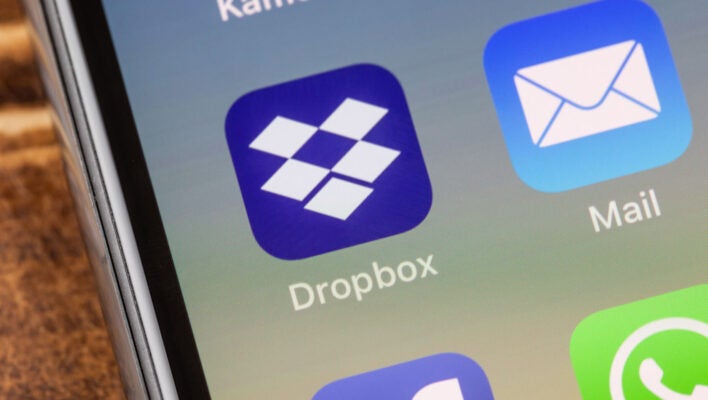Some Dropbox customers got a shock this week when they found out a new setting had been enabled by default that allowed their personal data to be shared with ChatGPT owner OpenAI. If that’s not something you like the sound of, we’re here to show you how to stop Dropbox sharing your data with OpenAI.
Many disgruntled users took to social media to air their concerns about the feature, which shares Dropbox data (including documents and files) with OpenAI as part of an AI Alpha search tool. Dropbox stated that data shared with third-party AI partners isn’t used to train AI models and is deleted within 30 days.
Dropbox CEO Drew Houston took to X (formerly Twitter) to apologize recently and quell any fears over customer data privacy.
He wrote: “The third-party AI toggle in the settings menu enables or disables access to DBX AI features and functionality. Neither this nor any other setting automatically or passively sends any Dropbox customer data to a third-party AI service.”
 🔎 Want to browse the web privately? 🌎 Or appear as if you're in another country?
🔎 Want to browse the web privately? 🌎 Or appear as if you're in another country?
Get a huge 86% off Surfshark with this special tech.co offer.![]()
How to Stop Dropbox Sharing Your Files and Data
Despite its AI and privacy FAQ page detailing the safeguards it has in place, many Dropbox customers still want to disable Dropbox sharing with OpenAI.
Fortunately, it’s easy to opt-out of Dropbox’s AI features, including data sharing with OpenAI. Just follow these steps:
- Log into your Dropbox account and click on your profile photo
- Navigate to Settings and then to Third-party AI
- Click the switch next to “Use artificial intelligence (AI) from third-party partners so you can work faster in Dropbox” to switch the toggle “Off”.
- Or use this link to access it quickly.
Should You Opt-in to Dropbox’s AI Features?
A Dropbox representative told Ars Technica, “The third-party AI toggle is only turned on to give all eligible customers the opportunity to view our new AI features and functionality, like Dropbox AI. It does not enable customers to use these features without notice. Any features that use third-party AI offer disclosure of third-party use, and link to settings that they can manage.
The statement continues: “Only after a customer sees the third-party AI transparency banner and chooses to proceed with asking a question about a file, will that file be sent to a third-party to generate answers. Our customers are still in control of when and how they use these features.”
Many users wouldn’t be opposed to the AI-powered features, especially those willing to embrace the new technology for its time saving superpowers. The incident has highlighted the importance of clear communication and transparency regarding AI and data privacy concerns for businesses.
What Do Dropbox’s New AI Features Actually Do?
So what does the feature do exactly? Dropbox unveiled new AI tools like Dash in July 2023, at the time explaining in a blog post how the universal search tool works.
Users can perform searches across their work platforms such as Google Workspace and Microsoft Outlook, using AI to connect the tools and save workers much-valued time. Dropbox cited a McKinsey report that found that knowledge workers spend 8.8 hours a week of unproductive time switching between apps searching for files and content.
Users are able to converse with the tool, much like a large language model (LLM) chatbot, in this case ChatGPT, asking it questions about the files.




